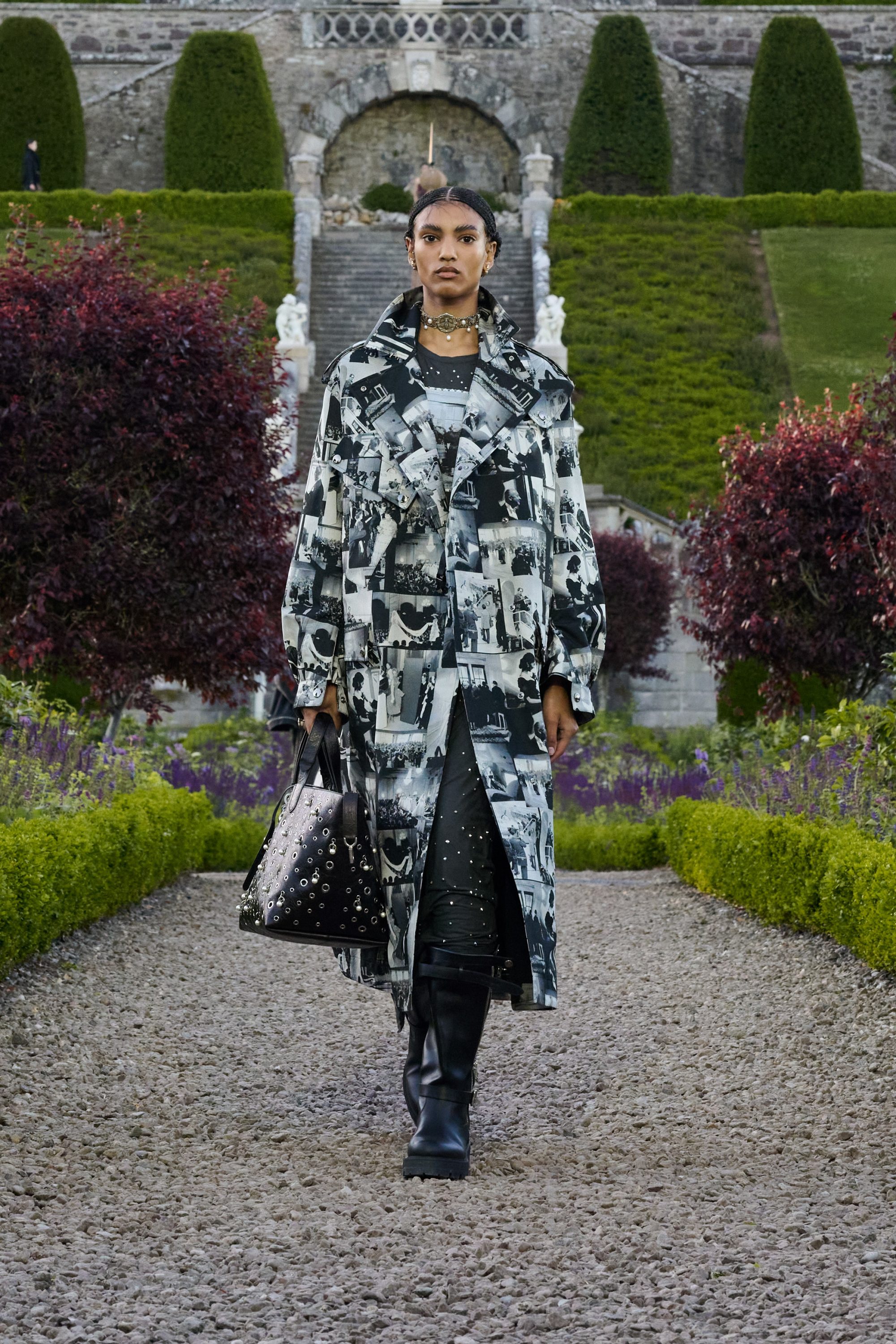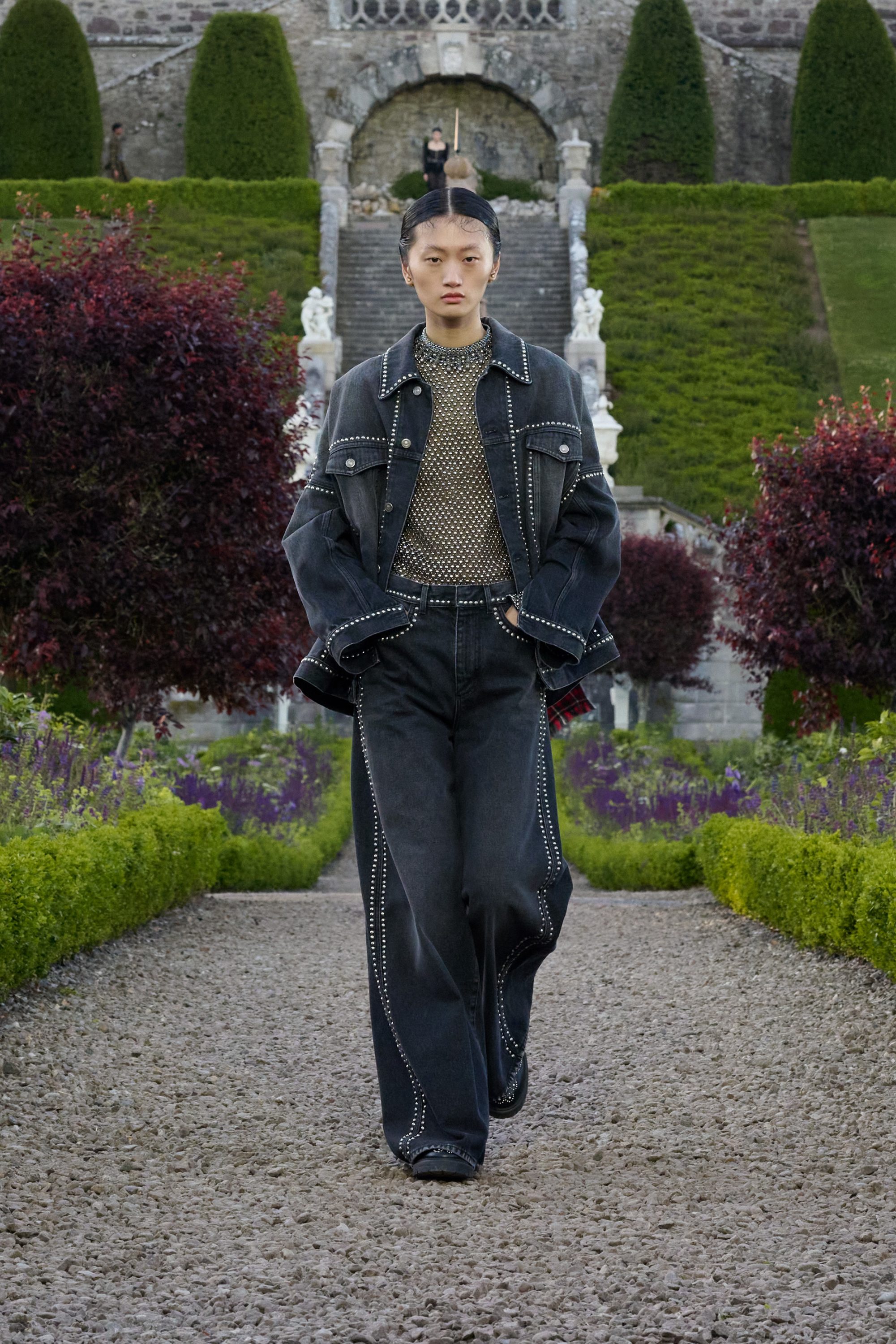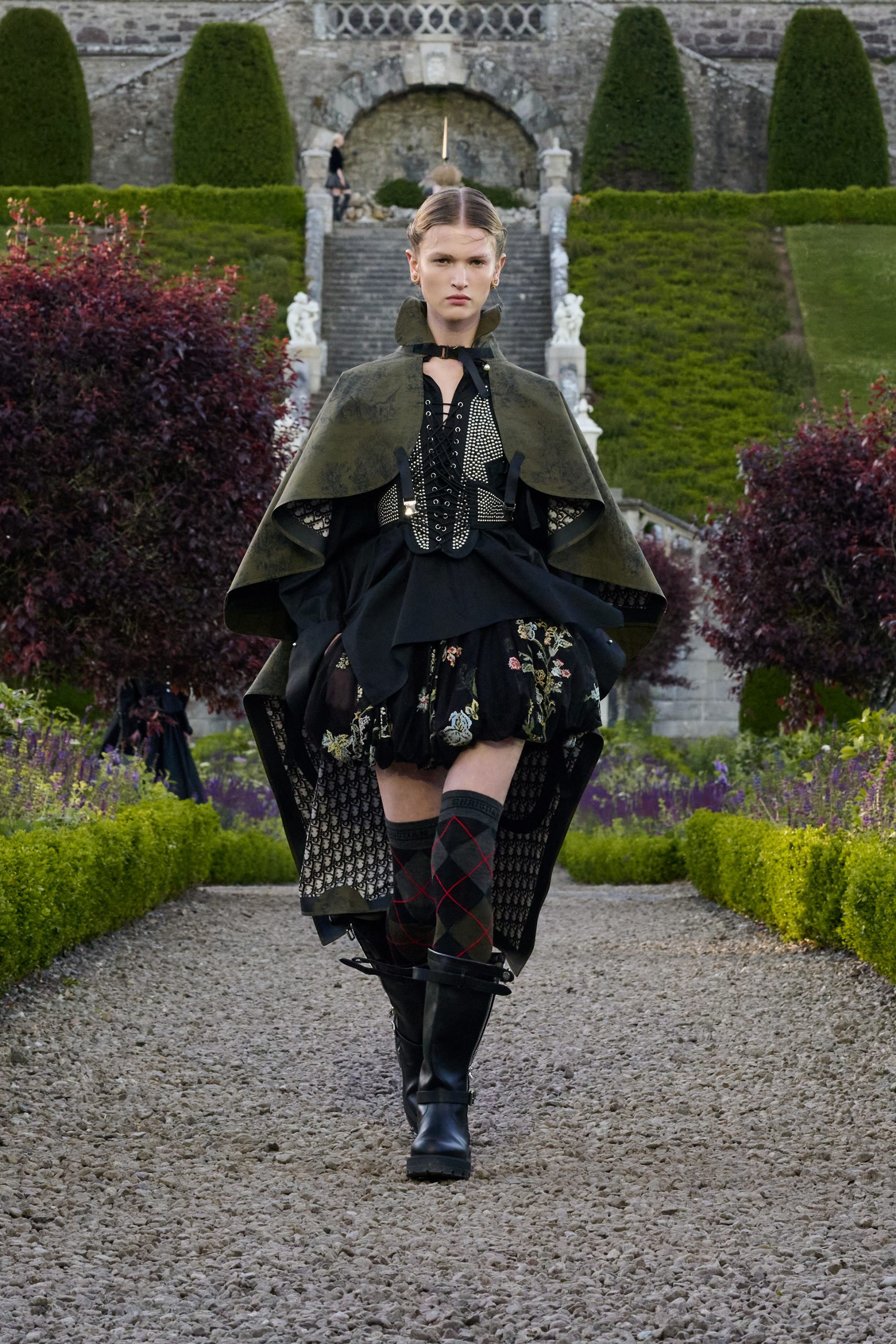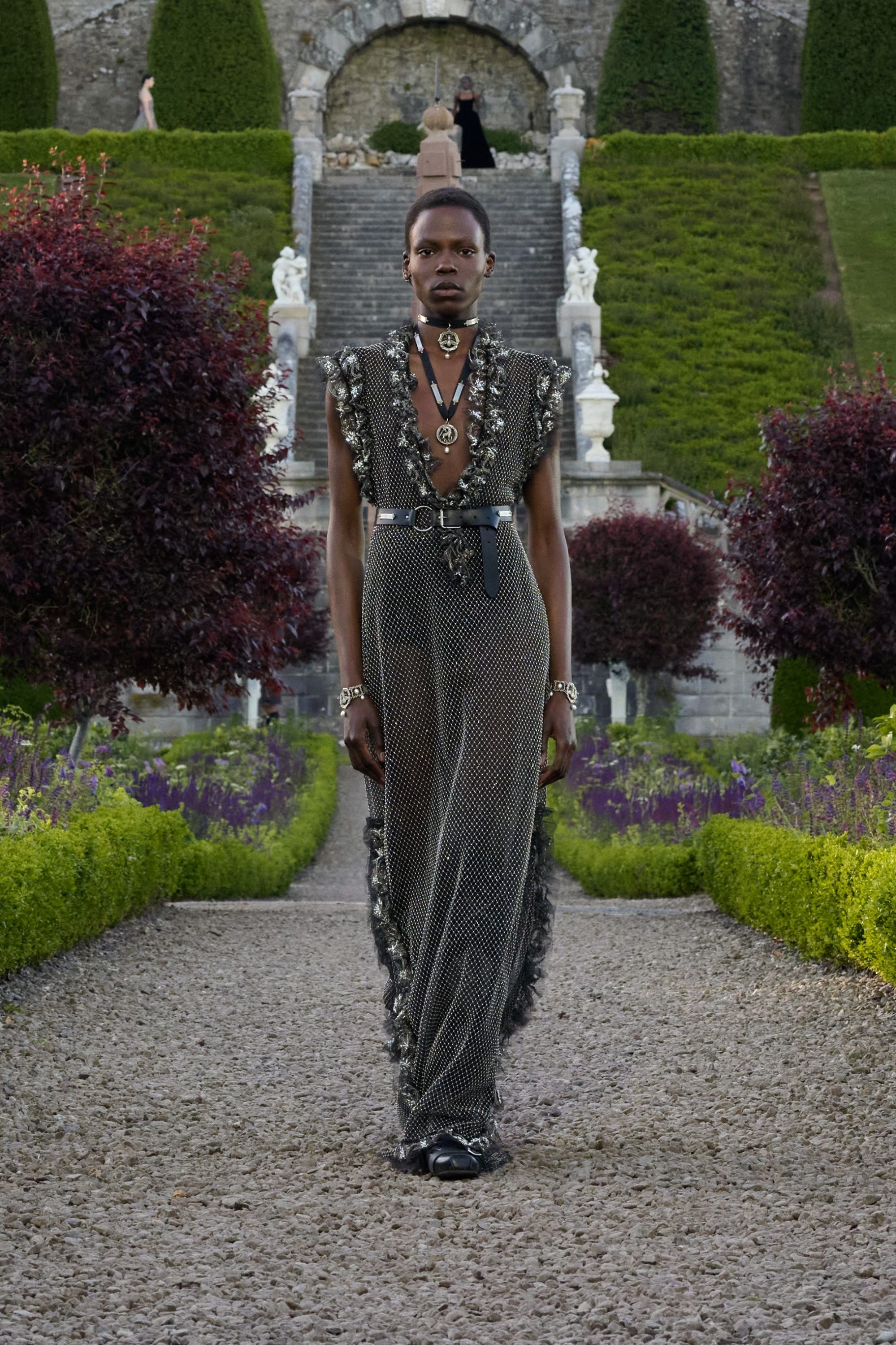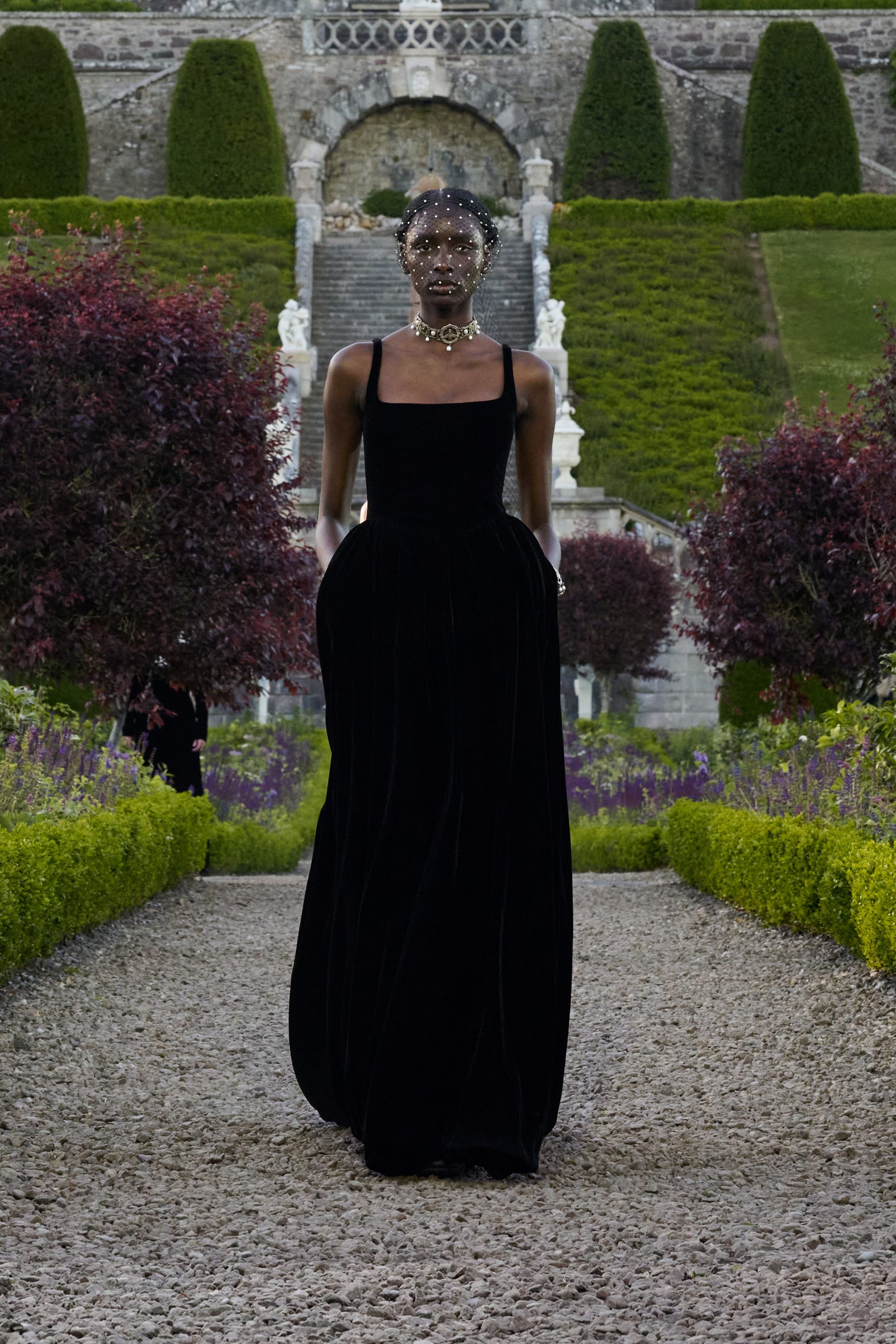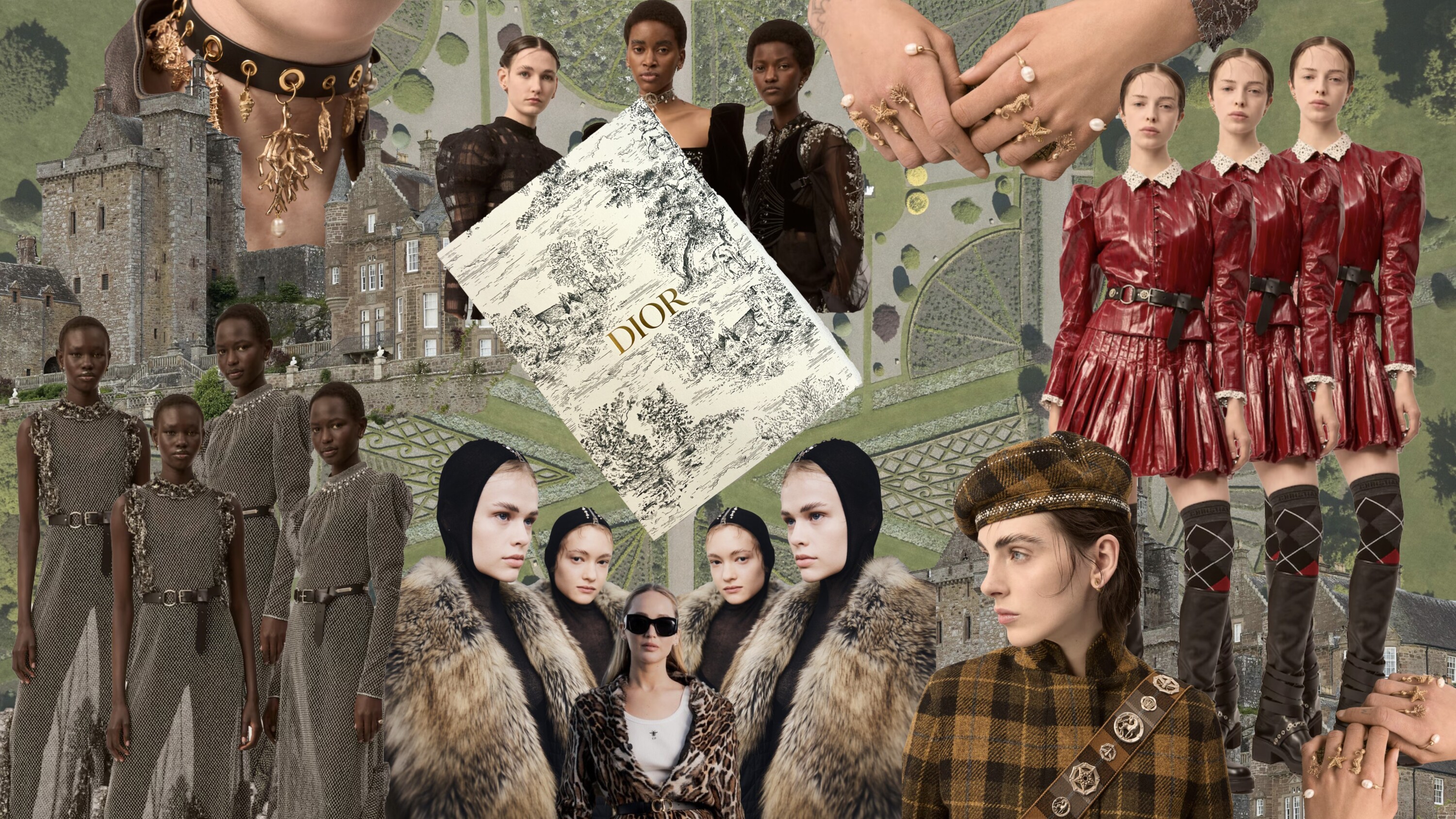Dior Weaves a Rich Tapestry of Scottish History with the Modern Narrative of Feminine Defiance
By Angela Baidoo
After announcing the next location for the Dior Cruise collection was Scotland, teasers for what was to come were shared across social media. Slowly revealing how the luxury houses’ creative director Maria Grazia Chiuri had immersed herself in the medieval history which inspired the collection she debuted on Monday 3rd June.
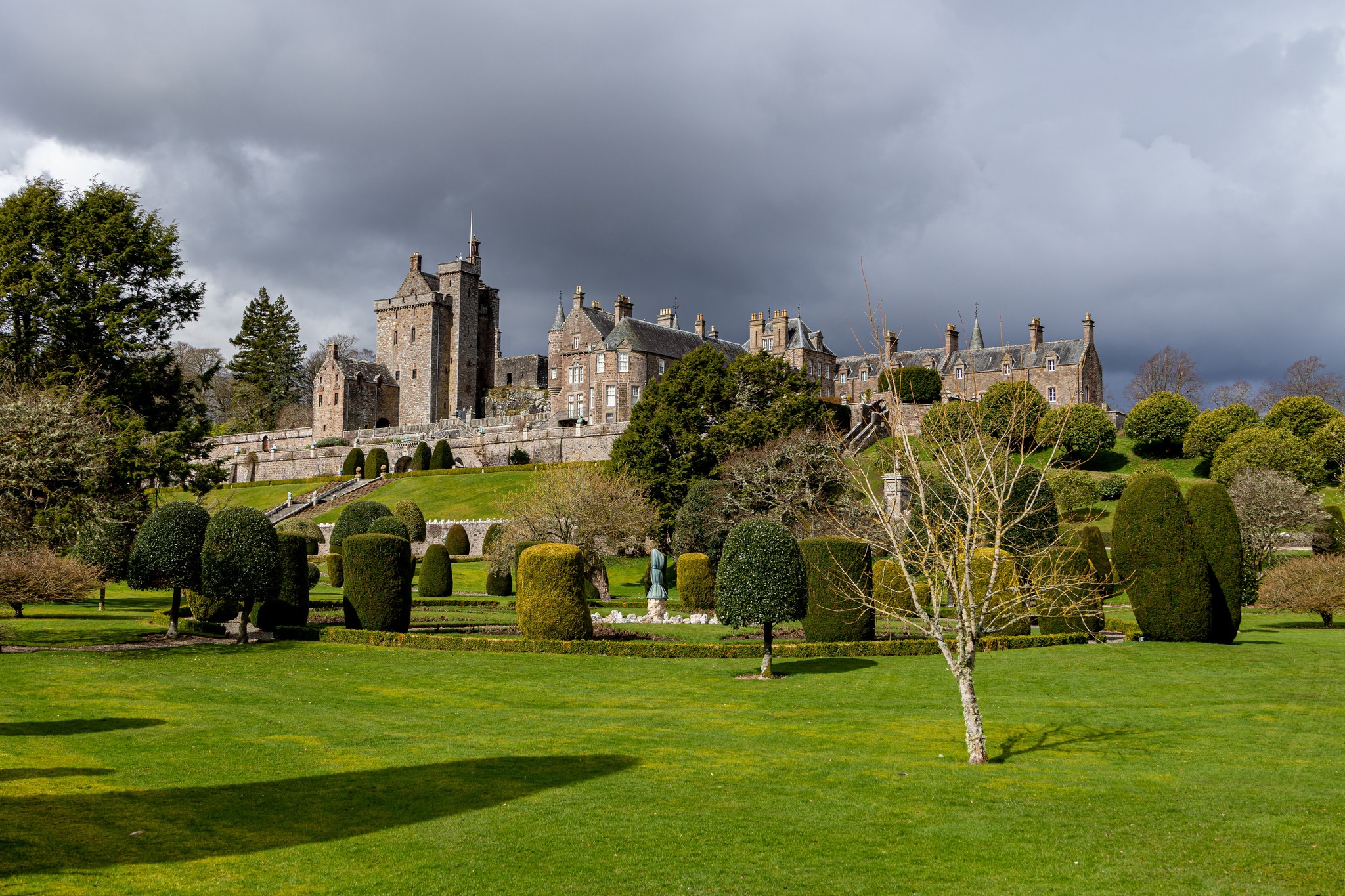
A History Lesson
On a visit to Musée de Cluny in Paris, a personal favourite of Chiuri, the late-medieval tapestries collectively known as ‘La Dame à La Licorne’ were of particular interest. As they depicted the famous ‘Lady and the Unicorn,’ with the unicorn, in this case, representative of purity and strength, as well as its dual symbolism as the national animal of Scotland.
Characteristics that are always omnipresent in Dior collections, where purity in the form of design language comes to the fore in the through line from past to present (The full skirt, the Bar Jacket), and strength in the continuous platforming of female artisans, activists, and artists who are challenging the status quo. Also aligning with the designer’s vision was the realization that women were much more liberated in medieval times despite evidence to the contrary.
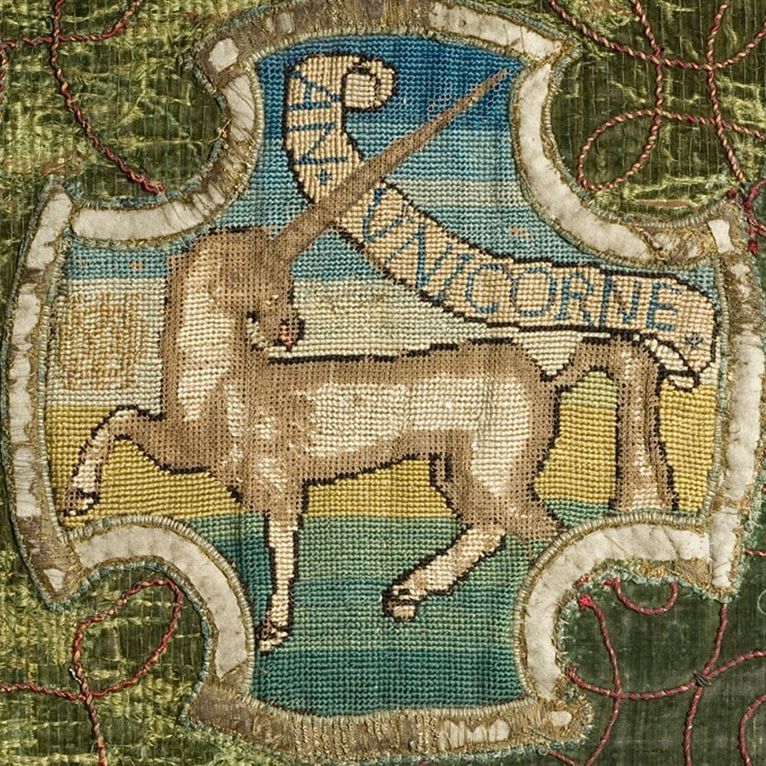

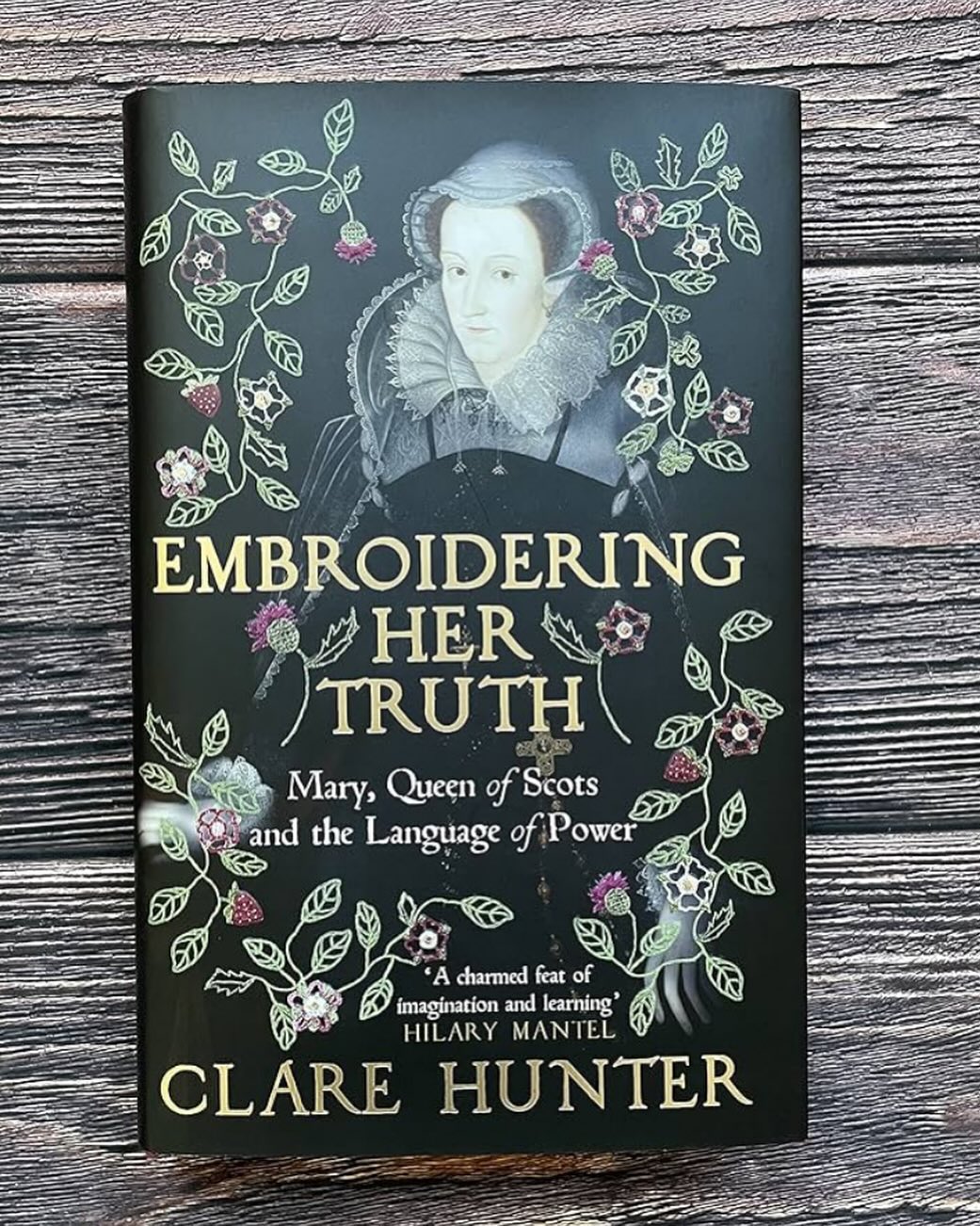
In the artwork there was also a centering of the female surrounded by nature, which the designer noted “Truly represents in some ways a great Mother Earth”. Elements of which which would later manifest themselves in key looks from the collection – think all-over floral embroidery and purple ‘heather’ tartan.
One of Scotland’s most infamous historical figures played a particularly strong role in the visual storytelling for Cruise 2025. Mary, Queen of Scots personal collection of needlework, housed at the Oxburgh Hall, a National Trust Estate in Norfolk, was also mined for inspiration. The surviving embroideries are over 450 years old and were created during the Queens 19 years of captivity in England. A time when she was prevented from receiving visitors or writing letters, so she ingeniously took to embroidery as a defiant form of covert communication. It became her lasting testimony when she had no voice and the world had turned against her. Within her works she is known to have portrayed both the unicorn and broken thistles, the national flower of Scotland is the thistle, so in depicting it as broken she was reflecting her country’s status in her absence.
Embroidery was a form of rebellion and communication for Mary”
– Clare Hunter, Author, ‘Embroidering Her Truth: Mary, Queen of Scots and the Language of Power’
Dior and Scotland: The Historical Link
Touring Drummond Castle (the shows location) which was built in 1409, Maria Grazia Chiuri learned of Scotland’s link with France. Mary, Queen of Scots (previously Stewart) was promised to and married the son of Henri II – then King France – Dauphin François in 1558 wearing an ornate white gown, which at the time was controversial as it was usually worn during a time of mourning in France. In 1295 the Auld Alliance was also formed between the two countries as a way to halt the expansion of England into their territories, when in “1421 at the Battle of Bauge the Franco-Scots army defeated the English army. The Scottish army was well rewarded by their French allies with honours, titles and as much fine food and drink as they could consume” according to Historic UK.
The Drummond Castle Gardens, known for their distinctive geometric landscaping (its laid out with a diagonal across the middle which is to represent the Scottish flag) is reminiscent of French Renaissance style and performed the part of the perfect natural backdrop for the collection.
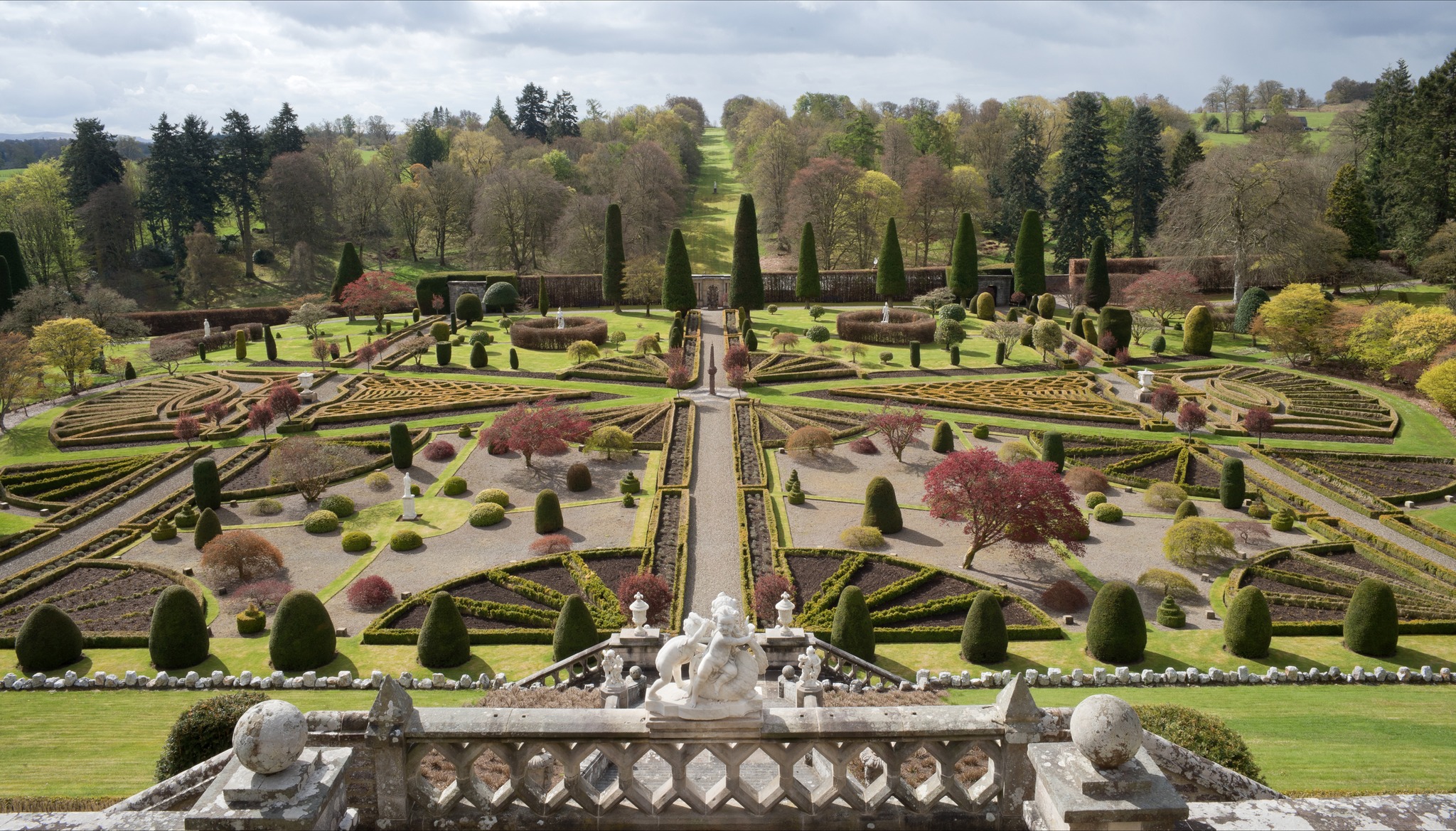
A much more contemporary link was revealed in the days preceding the show, as visiting guests and friends of the house were invited to explore Monsieur Christian Dior’s links with Scotland, as a way to better understand the shows underlying narrative.
Nearly 70 years ago, in 1955, Christian Dior flew “eight ‘mannequins – as his models were known – six staff and 172 dresses worth about £300 each on a private plane from France to Scotland” according to the BBC. Staged at the Gleneagles Hotel in Perthshire, the hotels ballroom became the runway which hosted one of the world’s most influential designers of the time for the high society of Scotland. It was in that same ballroom that Dior showcased once again – from its extensive and envied archive – looks from the collection, including off-the-shoulder, drop-waist gowns and bow-trimmed fit-and-flare floor-length dresses.
A tongue-in-cheek photo of Scottish fans of Dior – either latecomers or those who had failed to secure tickets – peering through the shuttered doors of the 1955 show was also used as a graphic print on the front of T-shirts which were gifted to guests to mark the occasion. Alongside custom-made blankets which were given out to The Impression by our all-black, kilt-wearing hosts. Protecting against the elements – as the show took place in the bracing Scottish outdoors – but also featuring a montage of photos from the Gleneagles Hotel show, including models backstage and their arrival via Air France to the awaiting photographers.
Another show was held at the Glasgow Central Hotel in 1951 as part of a ‘Friends of France’ charity initiative which raised £4000 at the time.
Collaborative Craftsmanship
Scotland’s rich history in textiles, prints, and patterns mean that there were a number of bold design aesthetics which the creative director could have pulled from, and as Scotland is known for its tweeds and tartans there was the possibility of the end result appearing in-cohesive, but in collaborating with experts in modernising key Scottish symbols Maria Grazia Chiuri reinterpreted kilts, tartans, argyles, and armour into silhouettes that will speak to the next generation of Dior consumer, while satisfying traditionalists, both of which made up the guest list in attendance.
Harris Tweed Hebrides
With every meter of Harris Tweed authenticated by the Harris Tweed Authority (since 1906 with a trademark stamp of an orb and Maltese cross), Margaret Ann Macleod, Chief Executive of Harris Tweed Hebrides described in a post on Diors Instagram account how Harris Tweed is produced in Shawbost Mill on the island of Lewis and Harris, which can trace its Provence as producers of the textile back centuries. They also work with traditional British wool sheep farmers who raise their herds on the moorlands and the crofts of the island. The short film revealed that the process of preparing virgin wool into yarns which are used to create Harris Tweed – once it has been dyed, carded, and spun – includes working with independent weavers who still utilise mechanical looms that are powered by peddles – a rarity in a fully industrialised world.
This process is what created the final patterned textiles used in the show, in a palette of mustard, red, and purple ‘Heather’ on mini-crinoline dresses, full-length kilts, cropped bombers, and buckled corset dresses.
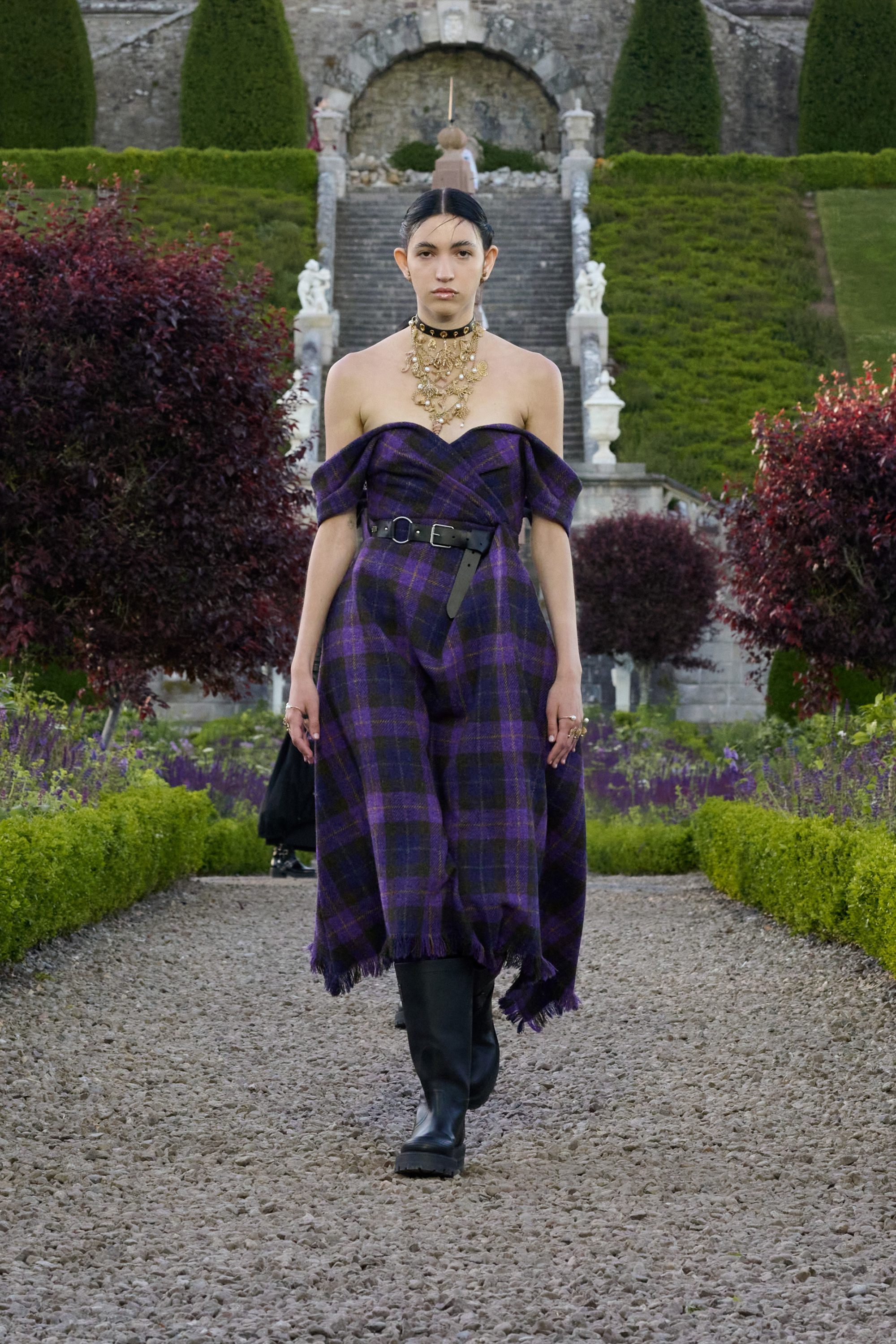
What sets this fabric apart is the unique process where the wool is dyed before spinning, enabling a rich blend of colours to merge into the yarn, resulting in a textile of remarkable depth and complexity. So honoured to have collaborated with such an important institution of textile tradition for the Dior Cruise 2025 collection. We created together a series of colours such as ‘Heather’, which opened the show, inspired by natural palettes of wild Scottish landscapes.”
– Maria Grazia Chiuri, Creative Director, Dior
Johnstons of Elgin and Esk Cashmere
Johnstons of Elgin, founded in 1797 and based in the towns of Elgin and Hawick, developed two distinctive pieces of knitwear for Dior. A blanket was also produced which carried the design of an archival map motif from the 1930s which Chiuri spotted in the studio of Johnstons of Elgin when researching the archive – the final piece was half knitted and half embroidered to achieve the intricate design. As with Harris Tweed, people are at the heart of the operation and each artisan is handed each piece to apply their part of the process to the final design. For their part in the Cruise collection they created knitted fairisle tank tops with the appliqued 1955 photos, oversized argyle sweaters with strategically fashioned cut-outs, and a blanket-style cape.
We’re very excited to see our pieces in this setting, which speaks to the beauty and history of Scotland”
– Chris Gaffney, Chief Executive of Johnstons of Elgin

Le Kilt – Samantha McCoach
In celebrating the work of both local artisans and heritage craft houses, Scottish designer Samantha McCoach, who has been elevating the classic kilt style with her brand Le Kilt over the last decade, was one of many craftspeople who were tapped to contribute to the collection, which will become a notable moment in Scottish fashion folklore. Chosen for her ‘Made in Scotland’ ethos and reliance on local artisans to create pieces that naturally speak to the luxury of longevity, McCoach created a mid-length kilt in khaki for the collection that was appliqued with the same imagery from the 1955 Gleneagles Hotel show. There were also versions in black gabardine with contrast stitching and patch pockets and classic red tartan.
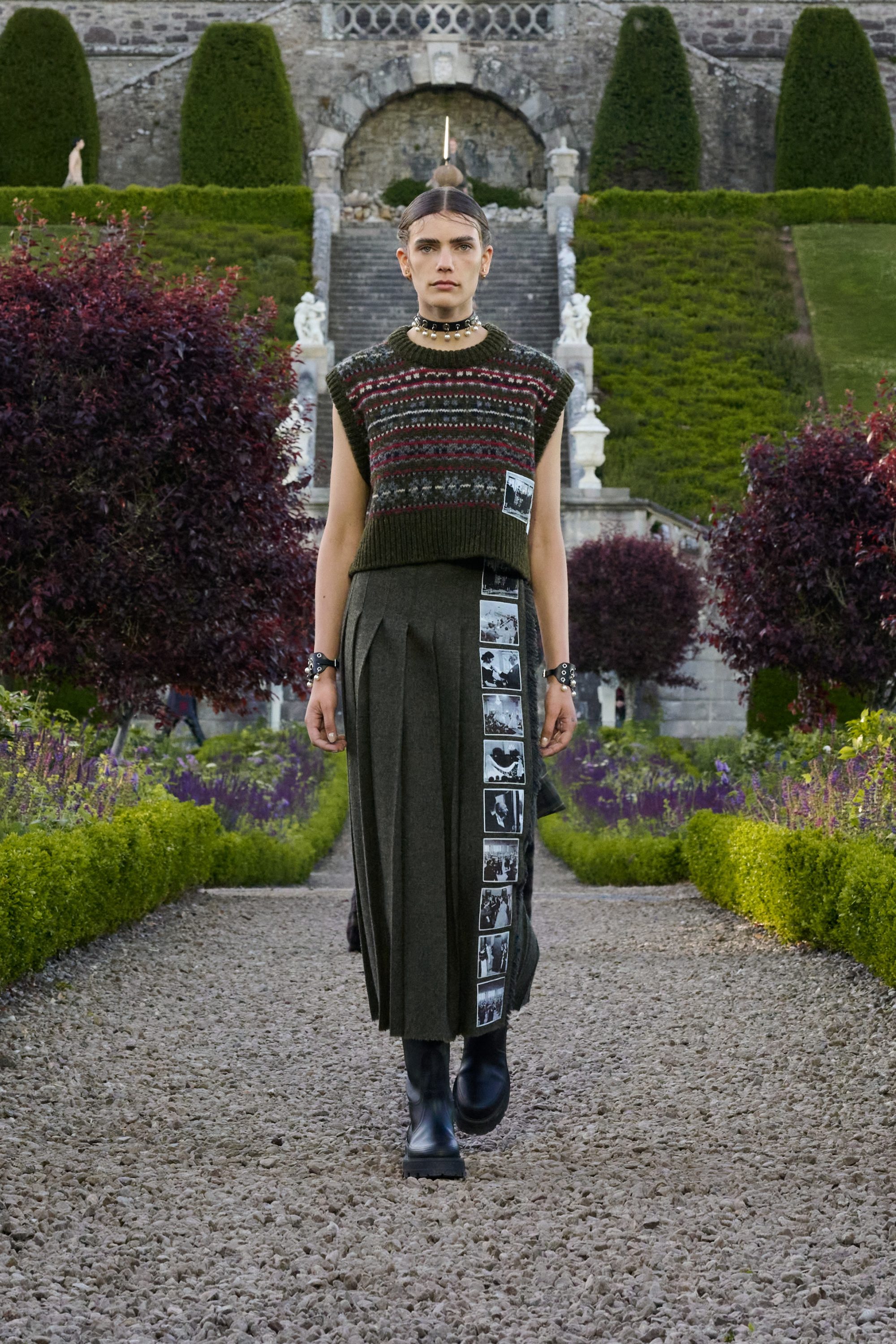
Stephen Jones Millinery and Robert Mackie of Scotland
Created in partnership with Stephen Jones Millinery, Robert Mackie of Scotland – one of the last surviving hat makers in Scotland – developed an update of the Scottish bonnet. Named the ‘Balmoral Bonnet’ as it originates from the Balmoral Castle in Aberdeenshire (often used as the residence of the British Royal family), the hat is a knitted soft wool cap decorated with a check pattern and toorie or bobble.
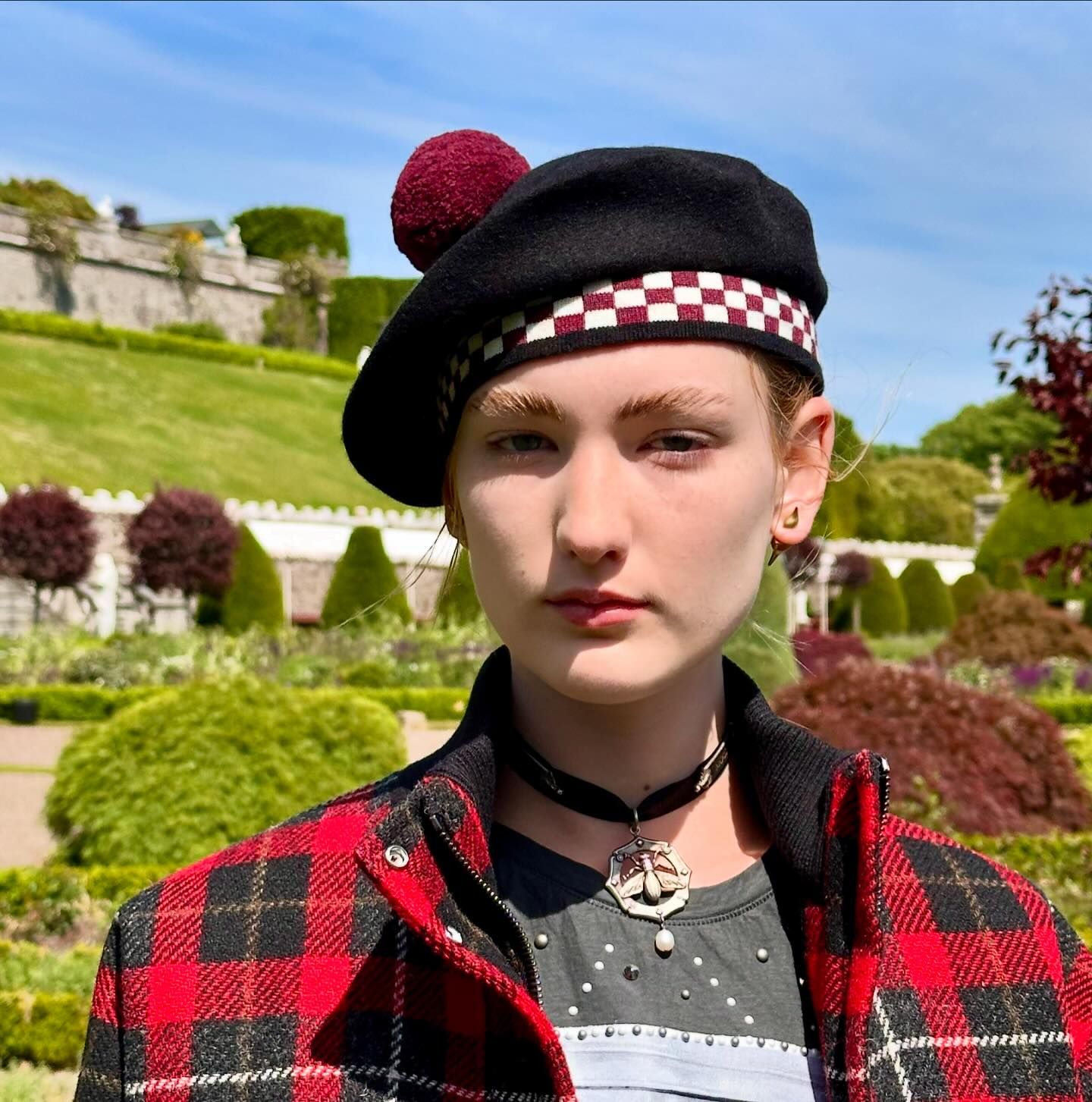
Pollyanna Johnson Ceramics
Subverting the twee nature of hand-painted ceramics, artist Pollyanna Johnson creates hand-painted and illustrated ceramics, which at first appear classic in nature in their style of portraiture, but on closer inspection are emblazoned with provocative slogans challenging the patriarchy and the experience of being a woman in the modern world, an example of which is “Don’t Tell Me to F***ing Smile”. Words derived from her unique pieces were embroidered onto a bubble-hem mini dress spelling out “Fierce, moody, emotional, difficult, nag, hysterical, feisty, bossy”, all words which have been used against women who dared to have an opinion in the past and present.
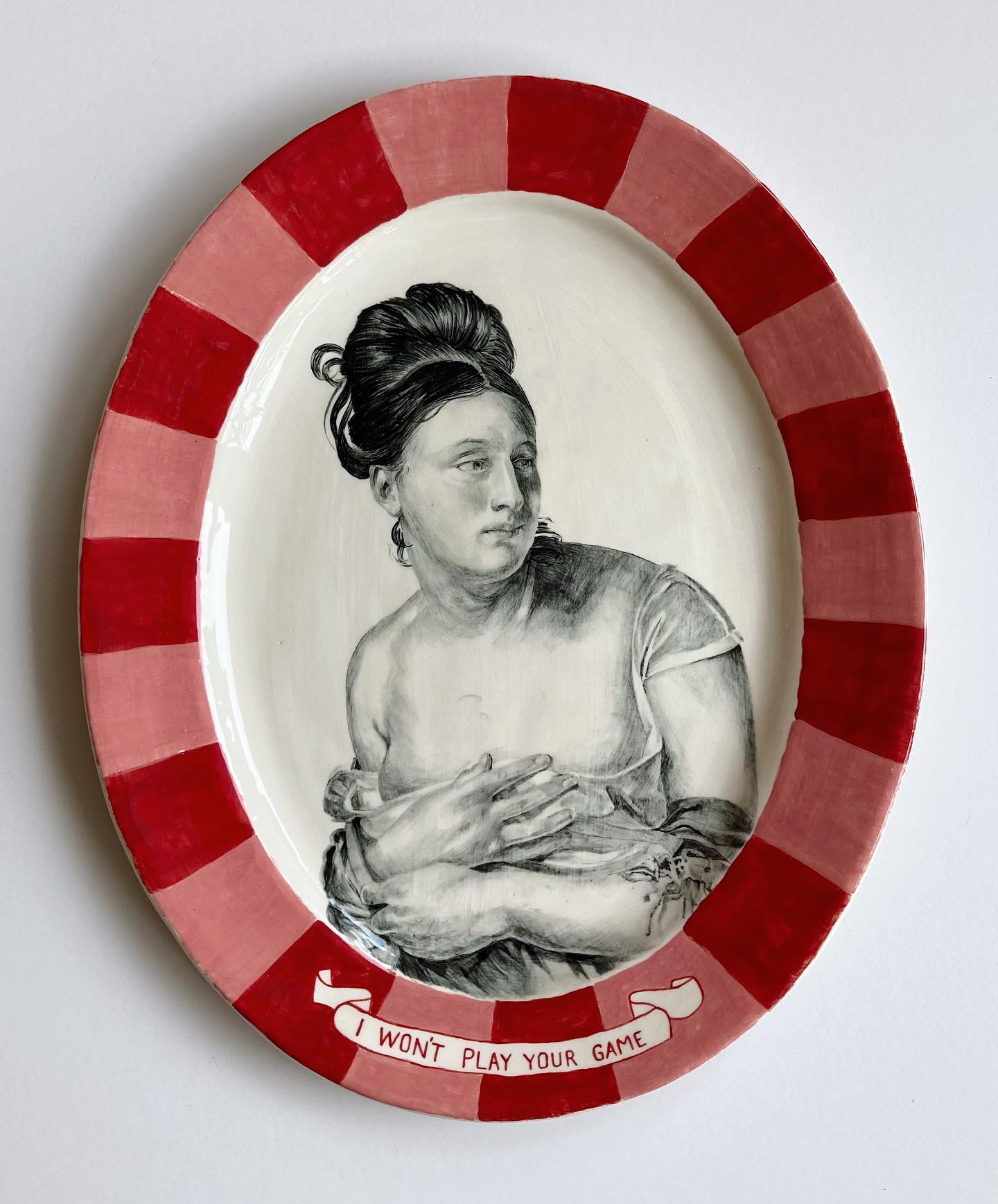
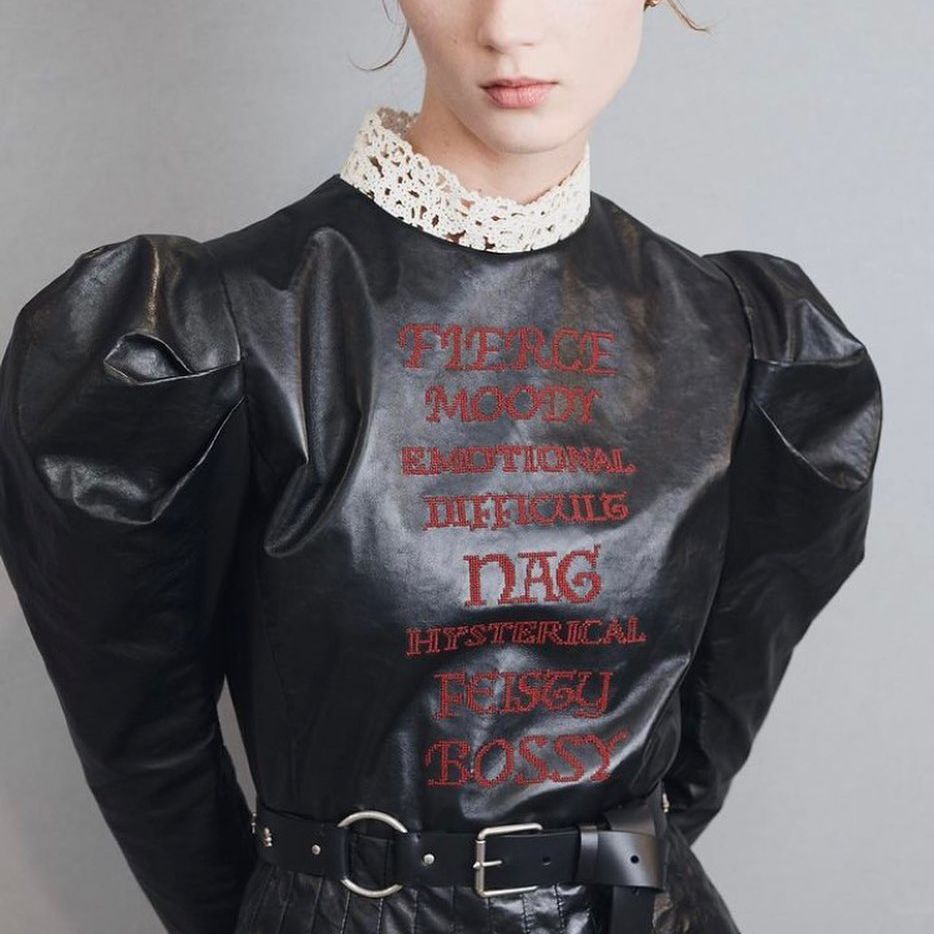
The Show and the Collection
Modernising traditional silhouettes and symbolism, while respecting the work of craftspeople who are keeping centuries old techniques alive – to be appreciated by a global audience – is always at the forefront of this current era of Dior, and in the now, even though the wearing of tartan has lost some of its original punk spirit, this collection was more so about replacing it with what a defiant young royal and her court may stomp around the castle grounds in, if they were around today.
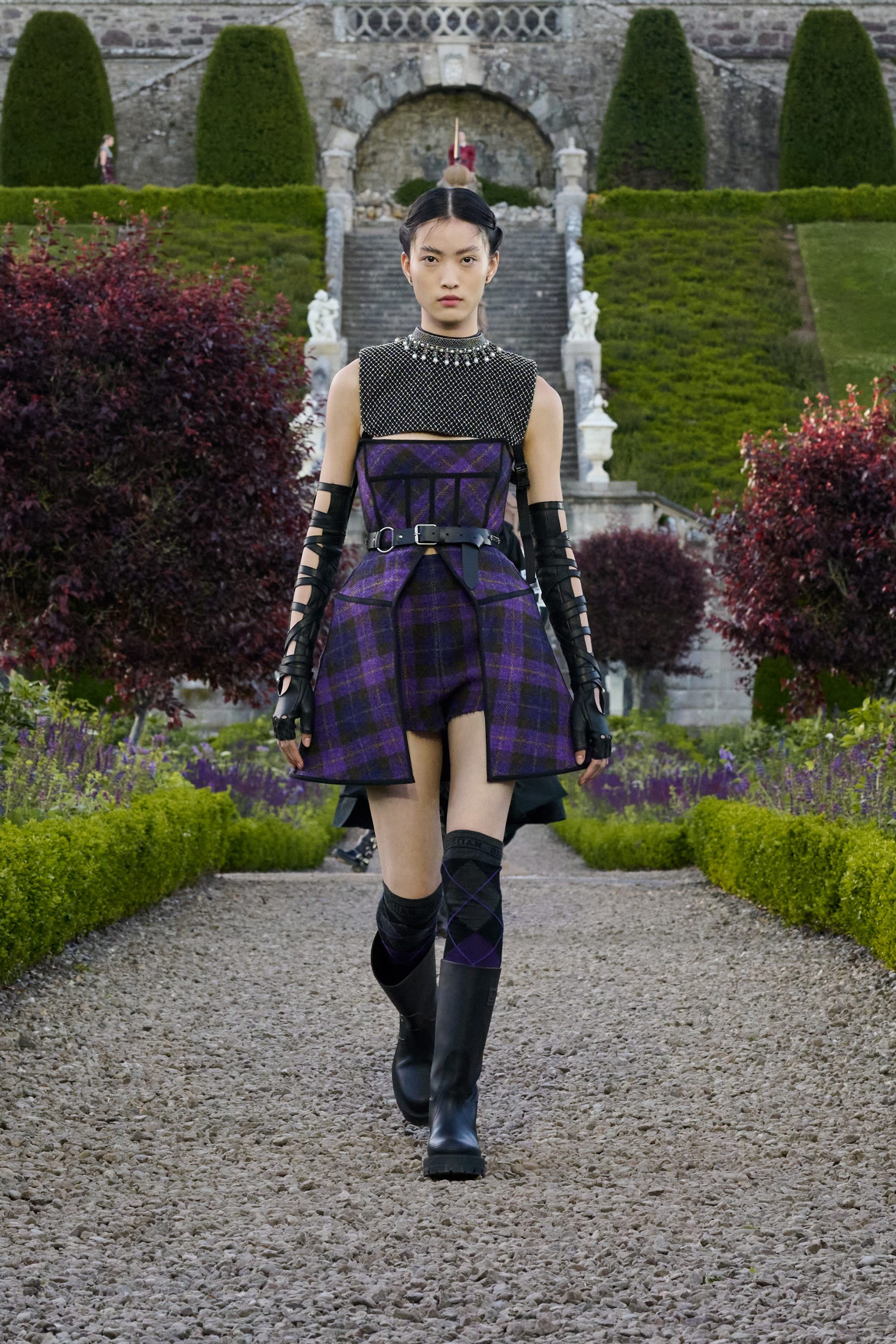
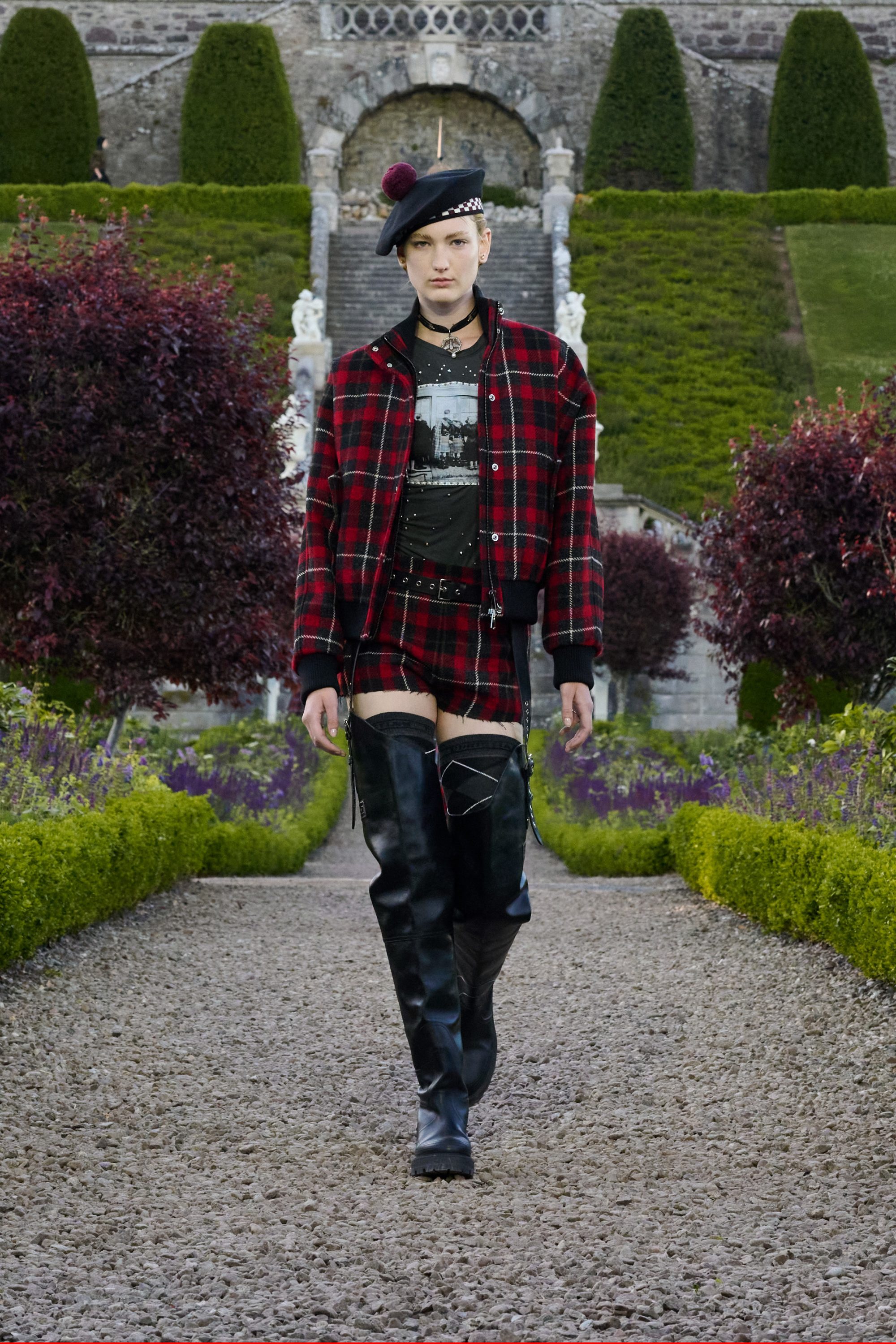
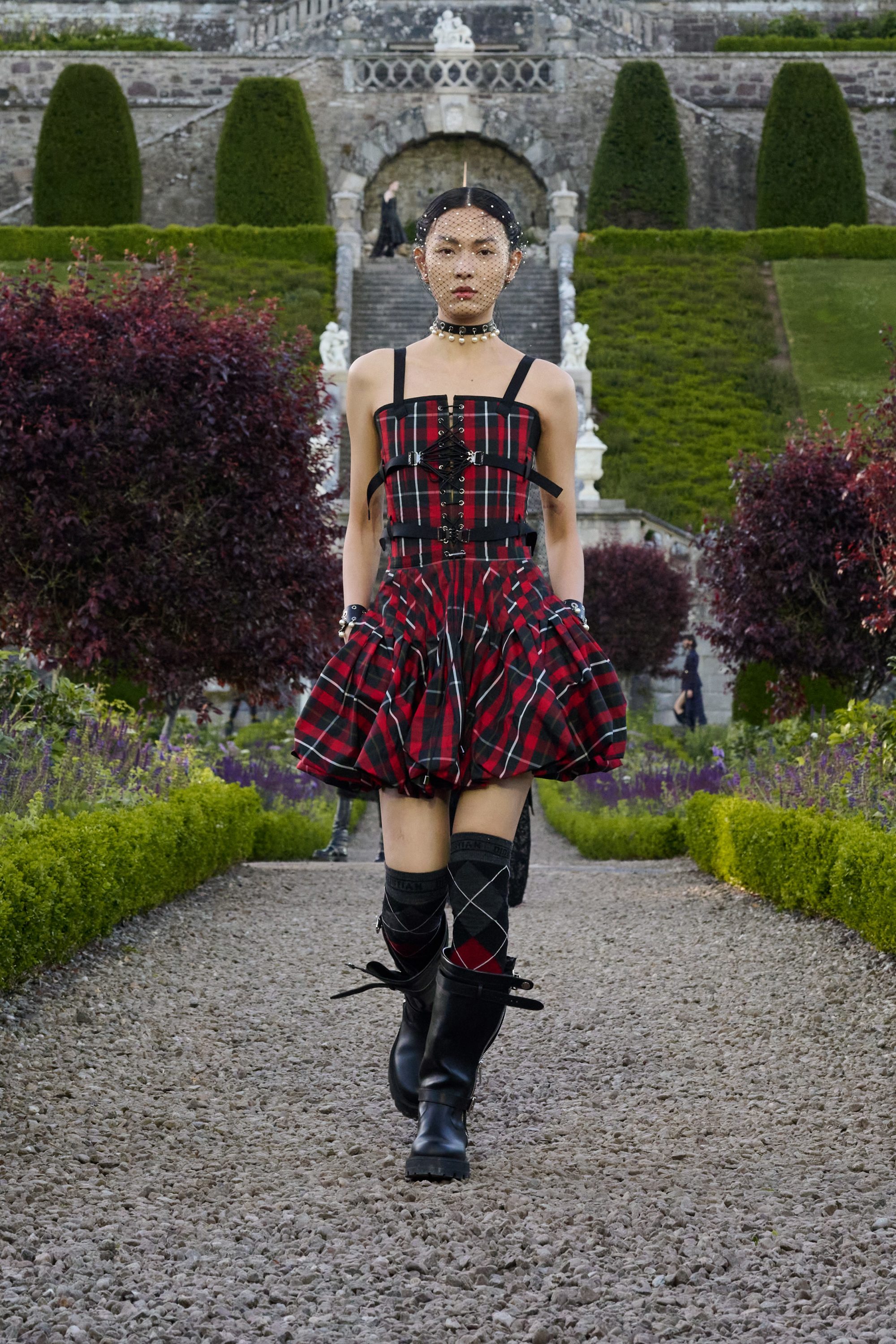
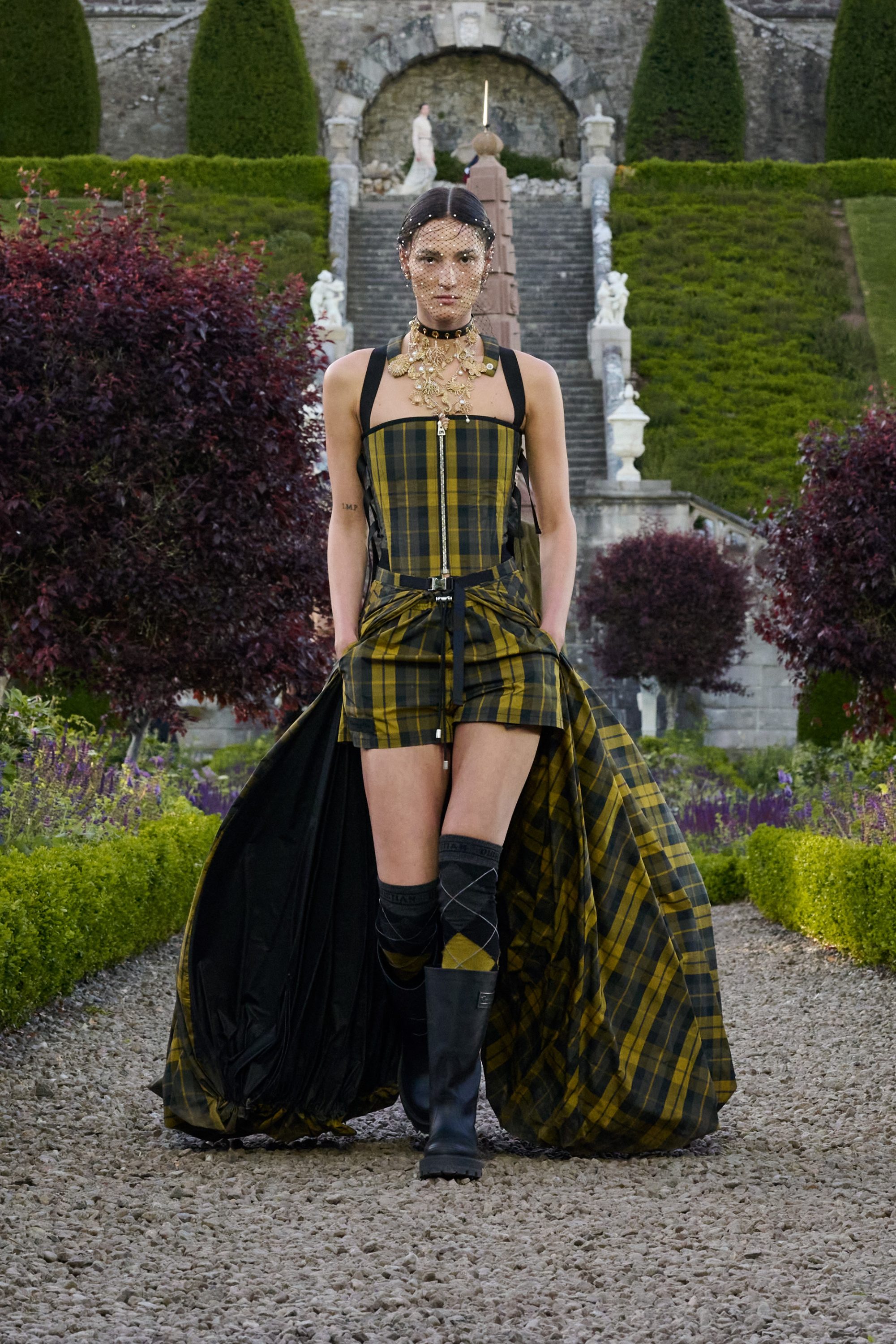
The Classic Dior fit and flare silhouette was present, but not in an obvious way which was refreshing, as it was reimagined in asymmetric fringed dresses, multi-buckled mini corset dresses, cropped crinolines and split-front bubble hem maxi skirts work with shorts. The use of tartan was made edgy through a mix of layering textures – sheers and armour-like embellishment – while the last section of the collection looked to pay homage to Mary, Queen of Scots time in incarceration with demure black velvet dresses and high collars. Juxtaposing these with battle-ready looks which appeared to mimic metal mesh-like armour, all worn with knee or thigh-length biker boots, sporran accessories and studded saddle bags.

